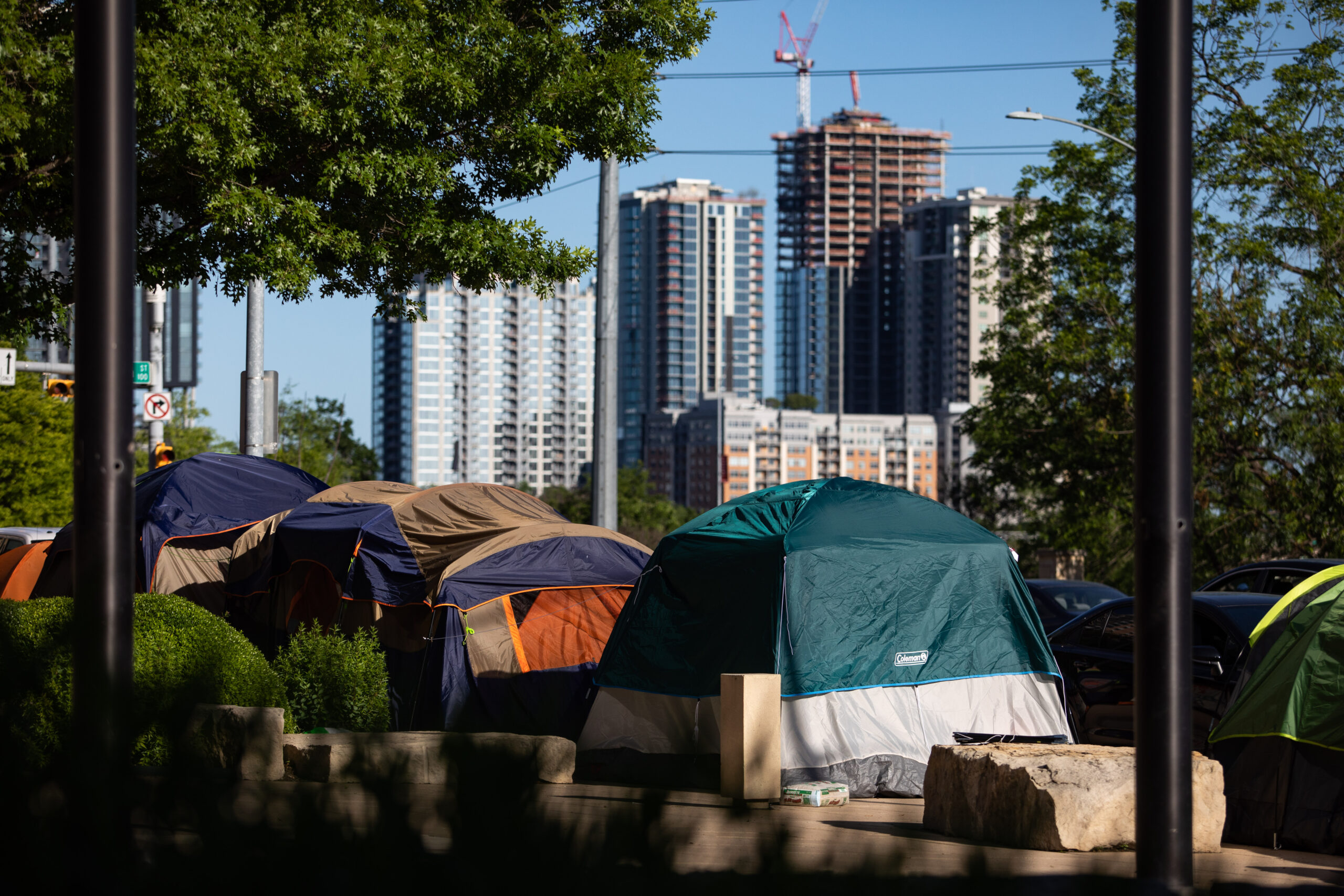Volunteers across the country headed out last month to conduct what researchers and policymakers call a point in time count (PIT), an annual survey cities and local governments conduct to get an estimate of the numbers of people experiencing homelessness in America.
Now, it’s an imperfect gauge, to be sure. But what happens to the data? What do the numbers add up to when it comes to attempts to win the war on homelessness?
Brookings fellow Tracy Hadden Loh coauthored a new report looking into the state of homelessness and joined Texas Standard to talk about her findings. Listen to the interview above or read the transcript below.
This transcript has been edited lightly for clarity:
Texas Standard: Do I understand that roughly 650,000 people is the current number of people estimated to be unhoused in the United States, is that right?
Tracy Hadden Loh: Yes. That’s nationwide.
That’s nationwide. All right, so as you dig into the data, what were you seeing about how cities are dealing with homelessness and which approaches might be winning?
Well, you know, the surprising story is that there’s a huge amount of variation in what’s actually happening in the country with homelessness.
While that sounds like a huge number of people and that number of people is going up overall, what we found is at the regional level, when you dive down and look at different metro areas, there are quite a few metro areas in the United States where homelessness is actually going down, and sometimes by a lot.
Well, did you name any names? I think the Texas capital city made your list of cities that seem to be winning.
Yeah. So, Austin and Travis County have a relatively high rate of homelessness, kind of in the middle of the pack for the country in terms of overall homelessness. But what is exciting about what’s happening in Austin and Travis County right now is that just between 2022 and 2023, they were able to reduce their rate of homelessness by almost 60%.
What else are you seeing out there? Is there a city that stands out to you that’s making even greater advances?
Well, you know, the thing that’s the most eye-catching is that Houston and the Houston metro area, including the surrounding counties, has the lowest rate of homelessness in the entire United States.
Why is that? I guess if you’re looking at raw data, it’s not going to tell you that sort of thing. But what are you hearing about that approach and why it’s working?
Well, I think the key in Houston – and there’s a few other regions in the U.S. that have had big success with this too – is that they take a unified regional approach to homelessness.
So instead of having one group that’s working on homelessness in the city, another group in Pasadena, another group in Montgomery County, etc., all of those counties and the city all work together and they pool funding and resources. They share a single data system that tracks people experiencing homelessness.
So maybe you are in the ER in one county. Maybe you are found by an outreach worker sleeping on the street in another county. They’re all talking to each other and so they know what people are going through, and that gives them better results in terms of finding them and trying to help them.
Do you notice something that’s sort of missing in the mix or in the conversation about what cities or what regions can do to find shelter and find longer term solutions for people experiencing homelessness?
Yeah. I think the changes that Austin is making are kind of illustrative of this, right?
That is when, during the pandemic, there’s a big spike in tent encampments popping up in downtowns. It was a really visible sign that things weren’t right and that, you know, systems weren’t working. And I think that that kind of alarming visible sign has concealed some of the things that we tried during the pandemic to reduce homelessness that were really effective.
So, for example, the federal government gave extra aid to localities in order to do homelessness prevention. So, for example, emergency rental assistance to stop people from losing their apartments and ending up on the street in the first place. And that was very effective at reducing homelessness.
Does that work for the long term? Those federal funds aren’t endless, obviously.
That’s actually the problem, right? That a lot of the emergency assistance that the federal government made available during the pandemic is gone now.
And so even though we had things we were doing that worked, now the resources aren’t there to continue those programs. And that’s why homelessness is getting worse again.
Some critics, including many people who have worked with people experiencing homelessness, say we are approaching this the wrong way. We’re just talking about homes when the underlying problems – issues of mental illness or substance use – that until we start to address those problems in a more substantial way, we’re always going to be wrestling with this. What would you say?
I think that’s fair. Homelessness has multiple root causes, and we have to address all of them in order to end homelessness.
The single biggest root cause is a lack of affordable housing. And so I think that it makes sense to talk about that one first. But you’re absolutely right that there isn’t just one root cause and there isn’t one solution.
I think there’s a lot of focus on substance abuse and mental health issues because people who are experiencing unsheltered homelessness, who are super visible on the street, are disproportionately suffering from those kinds of conditions. And so it’s natural for people’s minds to turn there. But a majority of the people experiencing homelessness actually don’t have either of those problems. And what they need is other kinds of help.
And there’s other things that we have to talk about, too. For example, the foster care-to-homelessness pipeline and the prison-to-homelessness pipeline.













